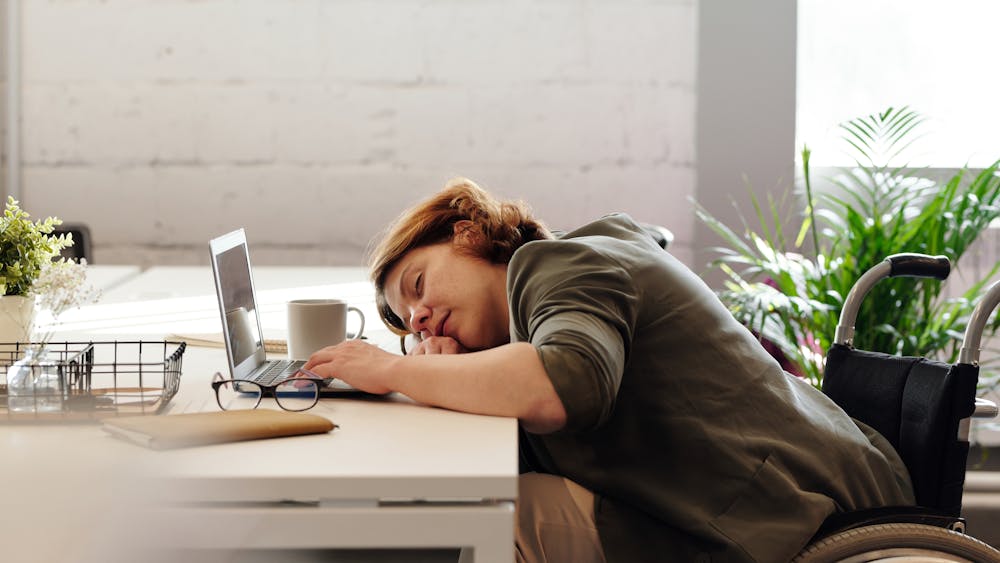Estimated Reading Time: 9 minutes
HHve you ever stopped to consider what you’re truly breathing, eating, and absorbing through your skin?
In a world filled with processed foods, synthetic materials, and environmental pollutants, the question isn’t *if* we’re exposed to toxins, but *how much*.
This isn’t about fear-mongering; it’s about empowerment. It’s about taking proactive steps towards a healthier, more vibrant you.
This guide delves into actionable strategies on how to reduce exposure to toxins, empowering you to reclaim control over your well-being.
The information here isn’t just about theory; it’s about practical steps you can integrate into your everyday life.
I remember a time when I thought I was doing everything right.
I ate “healthy” packaged foods, used conventional cleaning products, and never thought twice about the chemicals in my personal care items.
It wasn’t until I started experiencing persistent fatigue and skin irritations that I began to question my approach.
This journey led me to discover the importance of learning CBD basics and understanding how to minimize my exposure to toxins.
I’m eager to share what I’ve learned, hoping it inspires you to embark on your own path to wellness.
Before diving into solutions, it’s essential to understand the problem.
Our bodies are constantly bombarded with toxins – from the air we breathe to the food we eat.
These toxins, which can include heavy metals, pesticides, and synthetic chemicals, can accumulate in our bodies, potentially leading to a range of health issues.
Think of your body as a sponge. If you continuously pour toxins onto that sponge, it eventually becomes saturated.
While our bodies are equipped with natural detoxification systems, they can become overwhelmed, especially in today’s environment.
This overload contributes to inflammation, disrupts hormonal balance, and can compromise our immune system.
Understanding this “toxic load” is the first step in actively reducing it.
A recent study published in the *Journal of Environmental Health* highlights the alarming prevalence of environmental toxins in our everyday lives, emphasizing the urgent need for preventative measures.
These compounds have been linked to an increased risk of chronic diseases.
It’s not just about avoiding immediate dangers; it’s about cultivating long-term health and vitality.
By actively working to reduce your exposure, you can provide your body with the support it needs to thrive.
What we consume significantly impacts our overall health, making dietary choices a critical aspect of how to reduce exposure to toxins.
The food industry, despite advancements, often relies on practices that can introduce harmful substances into our meals.
This involves making informed choices at the grocery store, and developing habits in your kitchen to promote a less toxic diet.
Prioritizing organic produce is one of the most effective strategies.
Organic farming practices prohibit the use of synthetic pesticides, herbicides, and genetically modified organisms (GMOs).
When you choose organic, you’re directly reducing your exposure to these potentially harmful chemicals.
I vividly recall the difference I felt after switching to organic fruits and vegetables; my energy levels increased, and my skin became noticeably clearer.
While it may seem pricier, consider it an investment in your well-being.
Processed foods are often packed with additives, preservatives, and artificial ingredients that can burden your body.
These substances can be difficult for your body to process, leading to inflammation and potentially contributing to various health issues.
This is true whether you’re making a protein shake or baking a cake. Refined sugars are another culprit.
They can spike blood sugar levels, contributing to inflammation and oxidative stress.
Think of it like this: your body doesn’t need all these extra ingredients; it needs real food.
Beyond selecting the right foods, how you prepare them makes a difference.
Washing produce thoroughly under running water is a simple yet effective way to remove surface residues.
For fruits and vegetables with waxy coatings, a gentle scrub with a brush can help remove pesticides.
Peeling fruits and vegetables, when possible, can further reduce your exposure, although you’ll also lose some valuable nutrients from the skin.
Cooking methods also matter. Steaming, grilling, and baking are generally healthier options compared to frying, which can introduce harmful compounds.
Your home should be your sanctuary, not a source of toxins.
Many household products contain chemicals that can seep into the air, absorb through your skin, and linger on surfaces.
Fortunately, you have a high degree of control over the substances you bring into your home.
This section looks at cleaning products, personal care items, and the air you breathe to see how you can reduce exposure to these types of toxins.
Conventional cleaning products often contain harsh chemicals like ammonia, bleach, and phthalates, which can trigger allergies, respiratory issues, and other health problems.
Fortunately, there’s a growing market of non-toxic alternatives that effectively clean without the risks.
![Detoxification in Unlocking Wellness: How to Reduce Exposure to Toxins [2025] detoxification for unlocking wellness: how to reduce exposure to toxins [2025]](https://www.trendynutritionhub.com/wp-content/uploads/2025/11/temp_detoxification_1763341946.webp)
I made the switch years ago, and I haven’t looked back.
Look for products that are biodegradable, plant-based, and free of harsh chemicals and artificial fragrances.
Making your own cleaning solutions is a cost-effective and empowering option.
For example, a mixture of vinegar, water, and essential oils can effectively clean many surfaces.
Our skin is highly absorbent, making the ingredients in our personal care products particularly relevant.
Many conventional products contain parabens, sulfates, and artificial fragrances, which can disrupt hormone function, irritate the skin, and contribute to other health concerns.
Look for natural alternatives free of these harmful chemicals. This doesn’t mean sacrificing effectiveness.
You can find excellent shampoos, lotions, and makeup that are formulated with safe, natural ingredients.
Consider reading labels carefully and researching brands before making a purchase. The more you know, the better decisions you can make.
Indoor air quality can be significantly worse than outdoor air quality, often due to pollutants from cleaning products, building materials, and air fresheners.
Simple steps can make a big difference. Open windows regularly to ventilate your home and bring in fresh air.
Use an air purifier with a HEPA filter to remove dust, pollen, and other airborne pollutants.
Avoid using air fresheners and scented candles, which often contain harmful chemicals.
Consider bringing plants into your home; they can naturally purify the air.
Beyond what you consume and use, certain lifestyle habits can significantly affect how to reduce exposure to toxins and support your body’s natural detoxification processes.
This involves taking a more holistic approach to health. This includes adequate sleep, stress management, and mindful practices.
Sleep is when our bodies repair and detoxify themselves. During sleep, our bodies clear waste products and eliminate toxins.
Aim for 7-9 hours of quality sleep each night. Chronic stress can impair your body’s detoxification processes and contribute to inflammation.
Incorporate stress-reducing practices into your daily routine, such as meditation, yoga, or spending time in nature.
Even a few minutes of deep breathing exercises each day can make a difference.
Water is essential for flushing out toxins and supporting your body’s natural detoxification pathways. Drink plenty of water throughout the day.
Consider adding fresh lemon or cucumber for flavor. Support your liver and kidneys, the primary detoxification organs.
Consume foods that support liver health, such as leafy greens, cruciferous vegetables (broccoli, cauliflower), and berries.
Regular exercise also plays a role by promoting lymphatic drainage, which helps remove waste products from your body.
Reducing exposure to toxins is an ongoing process, not a one-time fix.
There’s no quick fix, but with consistent effort, you can make significant improvements to your health and well-being.
Start small, focusing on one area at a time. The cumulative impact of these small changes can be significant.
By making informed choices, adopting healthy habits, and being mindful of the toxins that surround you, you empower yourself to live a healthier, more vibrant life.
Remember, knowledge is power; it’s a journey, not a destination.
As you begin this journey, remember that it’s okay to ask questions, research products, and experiment to find what works best for you.
Don’t be afraid to try new things and adjust your approach as needed. It’s all about finding a balance that supports your unique needs.
The good news is that as more people learn how to reduce exposure to toxins, the demand for safer products and practices increases, which creates a positive cycle.
This growing awareness is fostering a healthier future for all of us. Embrace the process, and celebrate your progress along the way.
You deserve to feel your best! Ready to keep learning? Join our newsletter for weekly health tips!
{
“@context”: “https://schema.org”,
“@type”: “Article”,
“headline”: “Article Title”,
“description”: “Article description”,
“image”: “Featured image URL”,
“author”: {
“@type”: “Person”,
“name”: “Author Name”
},
“publisher”: {
“@type”: “Organization”,
“name”: “Site Name”,
“logo”: {
“@type”: “ImageObject”,
“url”: “Logo URL”
}
},
“datePublished”: “Publication Date”,
“dateModified”: “Last Modified Date”
}
Frequently Asked Questions
What are the most common sources of toxins in the home, and how can I avoid them?
Common sources include cleaning products, personal care items, and indoor air pollution. To avoid them, switch to natural, non-toxic cleaning products; opt for personal care products free of parabens, sulfates, and artificial fragrances; and improve indoor air quality by opening windows and using air purifiers.
Read labels and research product ingredients thoroughly.
Does my diet significantly impact my exposure to toxins, and if so, how can I adjust my diet to reduce this exposure?
Yes, your diet has a significant impact. You can adjust your diet by prioritizing organic produce, especially the’Dirty Dozen’list; limiting processed foods, refined sugars, and artificial ingredients; and properly preparing your food by washing produce thoroughly and considering cooking methods like steaming and baking over frying.
Are there specific foods or supplements that can help detoxify the body, and are they truly effective?
Certain foods, such as leafy greens, cruciferous vegetables, and berries, support liver function, which is crucial for detoxification. While some supplements, like milk thistle, are often promoted for detoxification, their effectiveness varies.
It’s essential to consult with a healthcare professional before taking any supplements, as the body’s natural detoxification processes are generally sufficient with a healthy lifestyle. There’s currently no magic bullet to instantly detox.
How do stress and sleep affect our body’s ability to detoxify, and what steps can I take to improve these aspects of my health?
Both stress and sleep significantly impact detoxification. Chronic stress can impair the body’s detoxification processes, while sleep is when the body repairs and clears waste products.
To improve these aspects, prioritize 7-9 hours of quality sleep each night, and incorporate stress-reducing practices into your daily routine, such as meditation, yoga, or spending time in nature. Regular exercise promotes lymphatic drainage, another important avenue for removing toxins.
What are some practical, everyday habits that I can implement to minimize my exposure to toxins?
Start by washing all fruits and vegetables thoroughly, opting for organic produce where possible, and reading product labels carefully. In your home, switch to non-toxic cleaning supplies and personal care products. Improve indoor air quality with air purifiers, and make sure to stay hydrated.
Incorporate stress-reducing activities like meditation, yoga, or spending time in nature. Get plenty of sleep, and make time to exercise regularly.
I’ve heard that some methods of detoxing are not safe. How do I know which methods are safe and effective?
The most effective and safe way to detox is by supporting your body’s natural processes. Rely on a balanced diet rich in whole foods, staying hydrated, prioritizing sleep and stress management, and regular exercise. Be wary of fad diets, cleanses, and products making exaggerated claims.
They often have limited scientific evidence and can sometimes cause harm. Always consult with a healthcare professional before starting any detox program or taking supplements. Focus on consistent, sustainable lifestyle choices rather than quick fixes.
document.addEventListener(‘DOMContentLoaded’, function() {
// 调整社交分享按钮位置
var sharingContainer = document.querySelector(‘.sharedaddy.sd-sharing-enabled’);
var recommendedReading = document.querySelector(‘h2:contains(“Recommended Reading”)’);
if(sharingContainer && recommendedReading) {
// 移动社交分享按钮到推荐阅读上方
var parent = recommendedReading.parentNode;
parent.insertBefore(sharingContainer, recommendedReading);
}
});


![Detox Your Home [Guide]: How to Create a Healthier Living Space purification for detox your home [guide]: how to create a healthier living space](https://www.trendynutritionhub.com/wp-content/uploads/2025/11/temp_purification_1763342236-150x150.webp)

![Boost Your Energy: A Natural Morning Routine Guide [2025] habits for boost your energy: a natural morning routine guide [2025]](https://www.trendynutritionhub.com/wp-content/uploads/2025/11/temp_habits_1763342040-150x150.webp)
![Unlocking Wellness: How to Reduce Exposure to Toxins [2025] living for unlocking wellness: how to reduce exposure to toxins [2025]](https://www.trendynutritionhub.com/wp-content/uploads/2025/11/temp_living_1763341946-150x150.webp)
![Go Green: Easy Organic Alternatives for Your Home [2025] living for go green: easy organic alternatives for your home [2025]](https://www.trendynutritionhub.com/wp-content/uploads/2025/11/temp_living_1763341845-150x150.webp)
![living for unlocking wellness: how to reduce exposure to toxins [2025]](https://www.trendynutritionhub.com/wp-content/uploads/2025/11/temp_living_1763341946.webp)
![unlock for unlock vibrant health: daily habits for a natural lifestyle [2025]](https://www.trendynutritionhub.com/wp-content/uploads/2025/11/temp_unlock_1763341417.webp)
![healthy lifestyle choices for unlock your best self: daily habits for a natural lifestyle [guide]](https://www.trendynutritionhub.com/wp-content/uploads/2025/11/temp_healthy_lifestyle_choices_1763036470.jpg)

